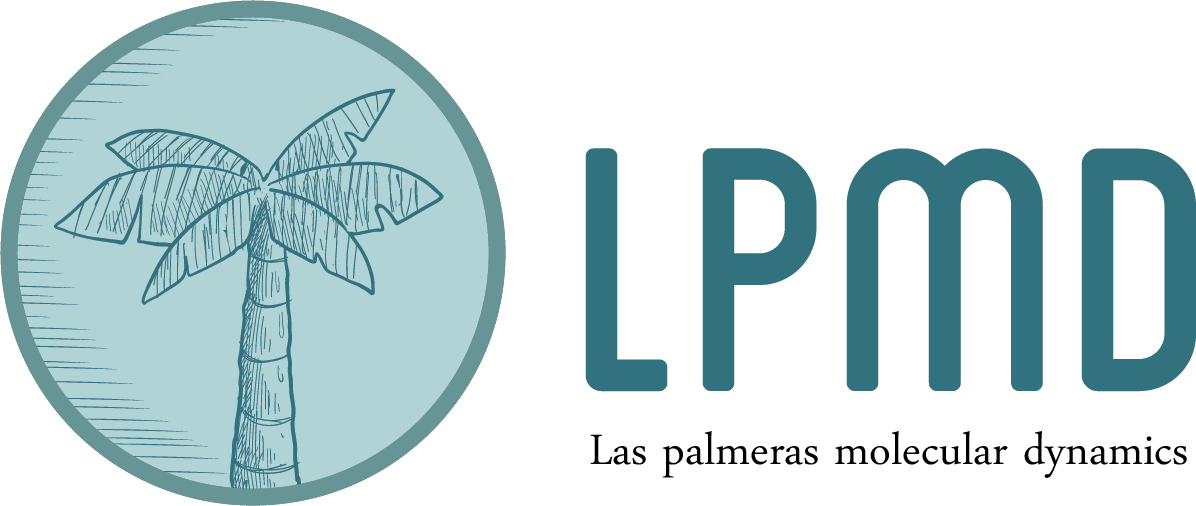Pair distribution function g(r)
In this example, we show how to obtain the pair distribution function (also known as radial distribution function) from the atoms trajectories. Let’s assume we have a file with the positions of atoms for each time step of a simulation. If the file is written in the native LPMD format, and called myfile.lpmd, we can obtain the average g(r) with a single command:
FROM THE COMMAND LINE
lpmd-analyzer -i lpmd:myfile.lpmd -r -u gdr:rcut=5.0,output=g_of_r.dat,average=true -c minimumimage:cutoff=8.0
FROM CONTROL FILE
set replacecell true input module=lpmd file=myfile.lpmd use minimumimage cutoff 8.0 enduse
use gdrrcut 5.0
output g_of_r.dat
average true
enduse
property gdr
-
-i= Determines the plugin to be used as an input. Possible input plugins arecrystal3d(as above),xyz,lpmd,lammps, vasp, pdb, and any other available file format. It is the equivalent ofmodulein the control file.-r= Read the cell vectors from the input file. This option is the equivalent toset replacecell truein the control file, and replaces the previously discussed-L(see Create/modify samples).gdr= This is the name of the plugin that calculates g(r). Check the parameters it receive using lpmd -p gdr.rcut= Maximum distance that r in which g(r) will be evaluated. MUST BE less or equal than 1/2 of the shortest edge of the simulation box to avoid self counting.output= File in which the pair distribution function will be written (in this case, g_of_r.dat)..average= Average over all the steps in the simulation. This is generally what is reported as a property of the system, but if you need the static pair distribution function (the separated g(r) for every snapshot of the simulation), then you can use average=false (or simply don’t write it, and average will take its default value).-c= Choose the cell manager method to handle atom neighbors. This is mandatory for every time lpmd-analyzer is used, even if you don’t use periodic boundary conditions.minimumimage= This is one of the most common ways to handle neighbors counting in molecular dynamics. You can read more about it in this link,. Another option is the linkedcell method.
